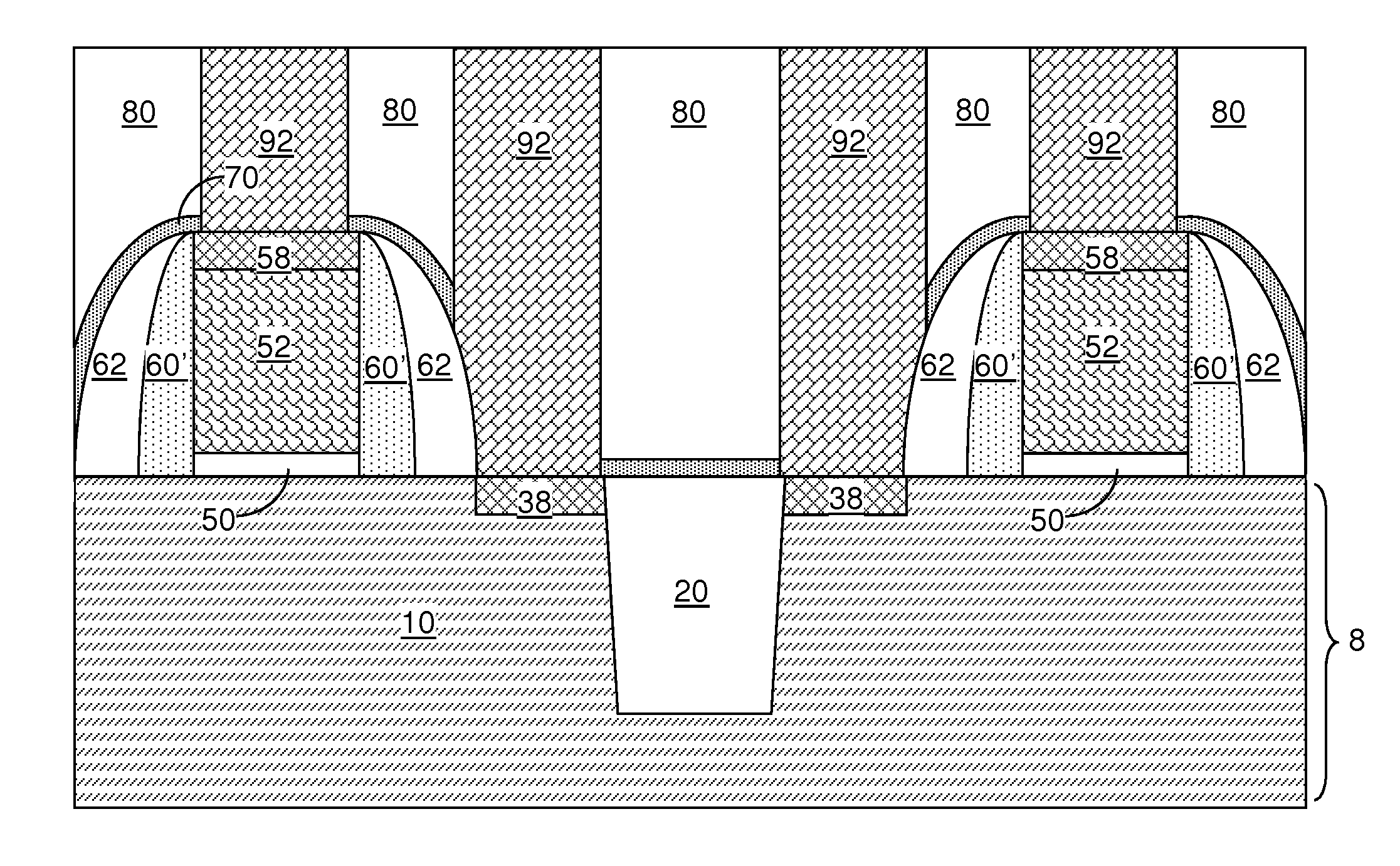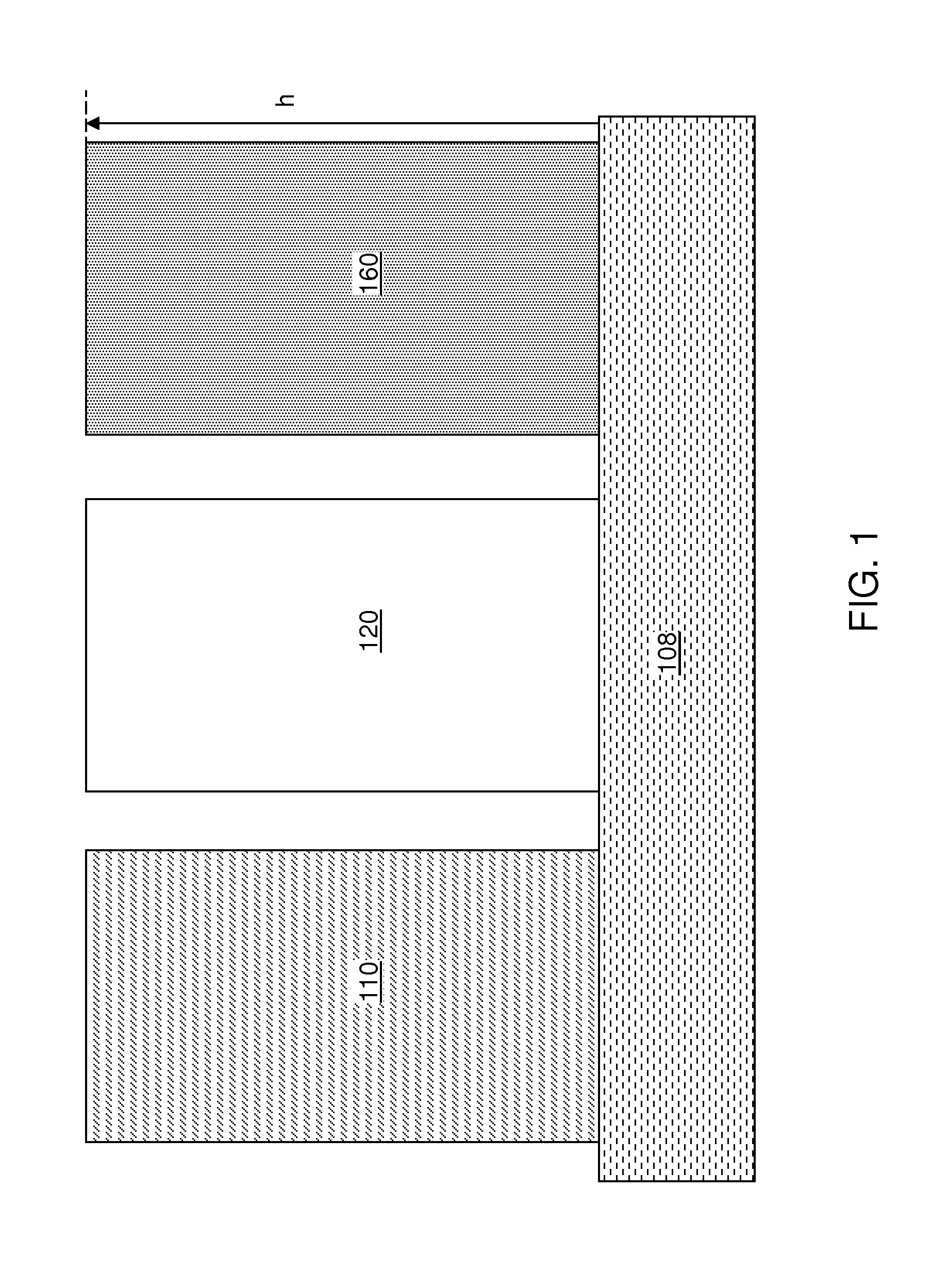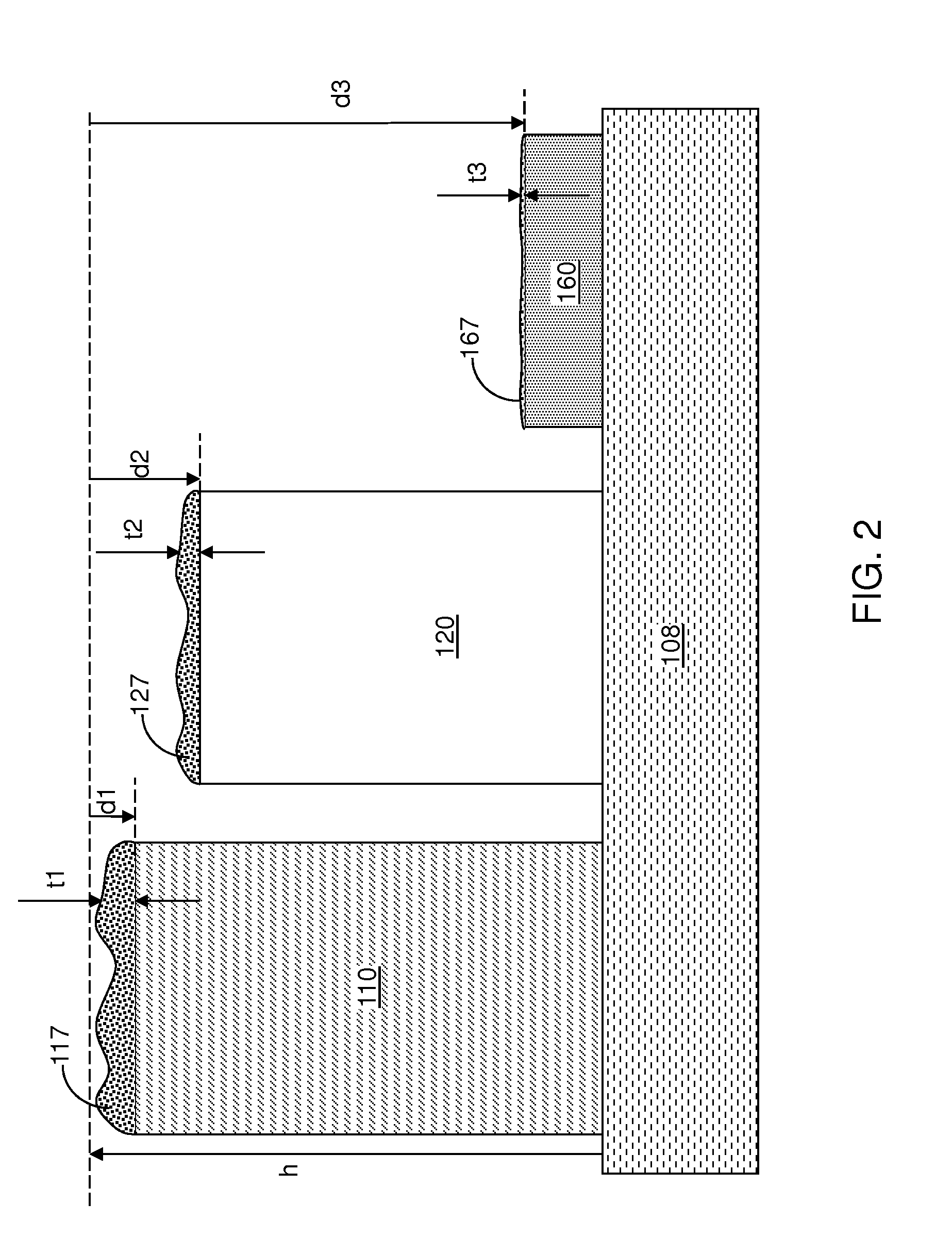High selectivity nitride etch process
a nitride etching and selective etching technology, applied in the field of anisotropic can solve the problems of poor selectivity of a nitride etching process, difficult etching of silicon nitride to more than one material, and often observed poor selective etching performance of silicon nitride, and achieve the effect of low reaction ra
- Summary
- Abstract
- Description
- Claims
- Application Information
AI Technical Summary
Benefits of technology
Problems solved by technology
Method used
Image
Examples
first embodiment
[0026]Referring to FIG. 1, a first exemplary structure according to the present disclosure includes a substrate 108, a silicon portion 110 located on a portion of a top surface of the substrate 108, a silicon oxide portion 120 located on another portion of the top surface of the substrate 108, and a silicon nitride portion located on yet another portion of the top surface of the substrate 108. The substrate 108 can include a semiconductor material such as single crystalline silicon, polysilicon, amorphous silicon, a silicon germanium alloy, a silicon carbon alloy, a silicon germanium carbon alloy, a III-V compound semiconductor material, a II-VI compound semiconductor material, or a combination thereof. Alternately or additionally, the substrate 108 can include an insulator material such as silicon oxide, doped derivatives of silicon oxide, silicon nitride, silicon oxynitride, a dielectric metal oxide having a dielectric constant greater than 3.9, or a combination thereof. Alternate...
second embodiment
[0054]Referring to FIG. 3, a second exemplary structure according to the present disclosure includes a semiconductor substrate 8, gate stacks formed thereupon, and a silicon nitride layer 60L formed over the semiconductor substrate 8 and the gate stacks. The semiconductor substrate 8 includes a semiconductor layer 10 that includes a semiconductor material portion 10. The semiconductor material portion 10 includes a silicon-based material that can be any of the material that may be employed for the silicon portion 110 described above.
[0055]A shallow trench isolation structure 20 including silicon oxide is formed within the semiconductor material portion 10 in the semiconductor substrate 8. The shallow trench isolation structure 20 can be formed, for example, by forming shallow trenches in the semiconductor material portion 10 and filling the shallow trenches with silicon oxide, which can be deposited, for example, by chemical vapor deposition (CVD). Excess portions of silicon oxide c...
PUM
 Login to View More
Login to View More Abstract
Description
Claims
Application Information
 Login to View More
Login to View More - R&D
- Intellectual Property
- Life Sciences
- Materials
- Tech Scout
- Unparalleled Data Quality
- Higher Quality Content
- 60% Fewer Hallucinations
Browse by: Latest US Patents, China's latest patents, Technical Efficacy Thesaurus, Application Domain, Technology Topic, Popular Technical Reports.
© 2025 PatSnap. All rights reserved.Legal|Privacy policy|Modern Slavery Act Transparency Statement|Sitemap|About US| Contact US: help@patsnap.com



